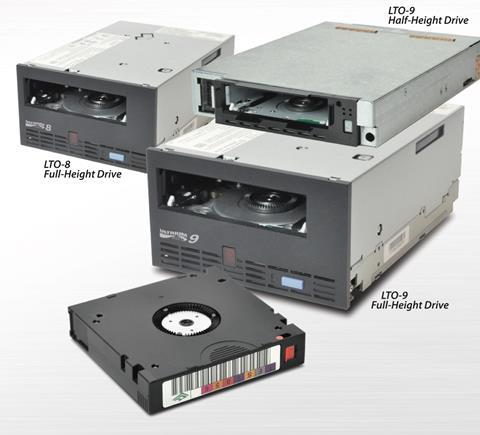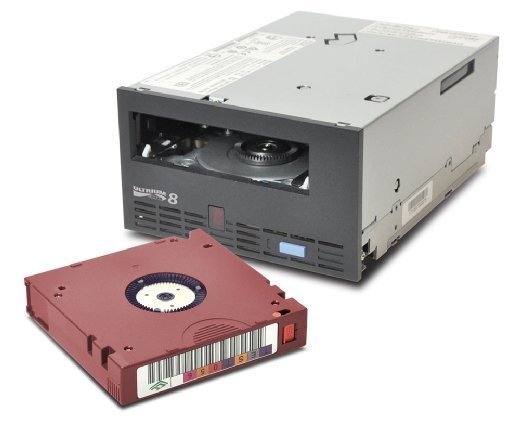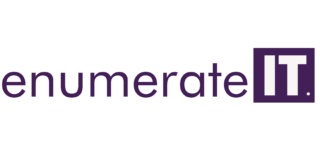A Comprehensive Overview of LTO Media: Its Benefits, Drawbacks, and Compatibility Limits

A Comprehensive Overview of LTO Media: Its Benefits, Drawbacks, and Compatibility Limits

Overview of LTO Media
Linear Tape-Open (LTO) media is a magnetic tape data storage technology used for backing up and archiving large amounts of data. It was developed jointly by Hewlett-Packard, IBM, and Seagate in the late 1990s and has since become a widely adopted standard for tape storage.

History LTO technology has a long and varied history that began with the development of magnetic tape technology in the 1950s. In the late 1990s, Hewlett-Packard, IBM, and Seagate developed the LTO technology, which aimed to create a standard for tape storage that was scalable, high-performing, and cost-effective. The first LTO-1 drive was released in 2000 and since then, several generations of LTO technology have been developed, each with increased capacity, faster data transfer rates, and improved reliability.
Benefits LTO media offers several benefits over other storage technologies. One of the most significant advantages of LTO is its scalability. With each new generation of LTO technology, the capacity and performance of the tape increases, making it an ideal solution for large-scale backup and archiving. LTO media also offers fast data transfer rates, with the latest generation, LTO-9, supporting a maximum transfer rate of up to 1,000 MB/s (compressed). Another advantage of LTO is its reliability, with a life expectancy of up to 30 years and a low failure rate.
Disadvantages Despite its many benefits, LTO media also has some disadvantages. One of the most significant disadvantages is its cost, with the latest generation of LTO tapes being relatively expensive compared to other storage technologies. Additionally, LTO media is not as fast as some other storage technologies, such as solid-state drives (SSDs), which can transfer data much faster. Finally, LTO media requires specialized hardware to read and write data, which can be a significant investment for organizations that are just starting with tape storage.

List of Generation and compatibility Table
| LTO GEN | Benefits and Disadvantage | Compatibility |
| LTO-1 | Benefit: High storage capacity (100 GB compressed), fast data transfer rate (20 MB/s). Disadvantage: Slow compared to later generations, not suitable for modern backup needs. | Can read and write LTO-1, can read LTO-2. |
| LTO-2 | Benefit: Higher storage capacity (200 GB compressed), faster data transfer rate (40 MB/s), backward compatibility with LTO-1. Disadvantage: Still not fast enough for modern backup needs, limited capacity. | Can read and write LTO-1, LTO-2, can read LTO-3. |
| LTO-3 | Benefit: Larger storage capacity (400 GB compressed), faster data transfer rate (80 MB/s), WORM (Write Once Read Many) capability. Disadvantage: Still not suitable for larger enterprise-level backup needs. | Can read and write LTO-2, LTO-3, can read LTO-4. |
| LTO-4 | Benefit: Larger storage capacity (800 GB compressed), faster data transfer rate (120 MB/s), hardware-based encryption support. Disadvantage: Costlier than previous generations, backward compatibility only with LTO-3. | Can read and write LTO-3, LTO-4, can read LTO-5. |
| LTO-5 | Benefit: Even larger storage capacity (1.5 TB compressed), faster data transfer rate (140 MB/s), LTFS (Linear Tape File System) support. Disadvantage: Higher cost, backward compatibility only with LTO-4. | Can read and write LTO-4, LTO-5, can read LTO-6. |
| LTO-6 | Benefit: Increased storage capacity (2.5 TB compressed), faster data transfer rate (160 MB/s), support for partitioning of tape into two segments. Disadvantage: Higher cost, backward compatibility only with LTO-5. | Compatibility limit: Can read and write LTO-5, LTO-6, can read LTO-7. |
| LTO-7 | Benefit: Even larger storage capacity (6 TB compressed), faster data transfer rate (750 MB/s), backward compatibility with LTO-6. Disadvantage: Costlier than previous generations, backward compatibility only with LTO-6. | Compatibility limit: Can read and write LTO-6, LTO-7, can read LTO-8. |
| LTO-8 | Benefit: Massive storage capacity (12 TB compressed), fast data transfer rate (360 MB/s), backward compatibility with LTO-7. Disadvantage: Higher cost, backward compatibility only with LTO-7. | Compatibility limit: Can read and write LTO-7, LTO-8, can read LTO-9. |
| LTO-9 | Benefit: Huge storage capacity (45 TB compressed), extremely fast data transfer rate (up to 1,000 MB/s compressed), backward compatibility with LTO-8. Disadvantage: Higher cost, backward compatibility only with LTO-8. | Compatibility limit: Can read and write LTO-8, LTO-9. |
Generations and Compatibility Limit LTO technology has evolved over the years, with each new generation offering increased capacity, faster data transfer rates, and improved reliability. As of 2021, the latest LTO technology is LTO-9, which offers a maximum capacity of 45 terabytes (compressed) and a data transfer rate of up to 1,000 MB/s (compressed).
LTO media has backward compatibility, which means that newer generations of LTO drives can read and write data to older generations of LTO tapes. However, it is important to note that backward compatibility does not guarantee forward compatibility, meaning that an LTO drive from a newer generation may not be able to read media from an older generation.
Overview of LTO Media



